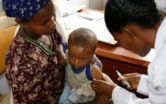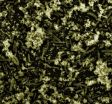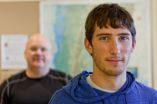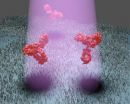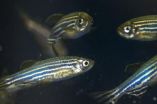(Press-News.org) The age of the Anthropocene--the scientific name given to our current geologic age--is dominated by human impacts on our environment. A warming climate. Increased resistance of pathogens and pests. A swelling population. Coping with these modern global challenges requires application of what one might call a more-ancient principle: evolution.
That's the recommendation of a diverse group of researchers, in a paper published today in the online version of the journal Science. A majority of the nine authors on the paper have received funding from the National Science Foundation (NSF).
"Evolution isn't just about the past anymore, it's about the present and the future," said Scott Carroll, an evolutionary ecologist at University of California-Davis and one of the paper's authors. Addressing societal challenges--food security, emerging diseases, biodiversity loss--in a sustainable way is "going to require evolutionary thinking."
The paper reviews current uses of evolutionary biology and recommends specific ways the field can contribute to the international sustainable development goals (SDGs), now in development by the United Nations.
Evolutionary biology has "tremendous potential" to solve many of the issues highlighted in the SDGs, said Peter Søgaard Jørgensen, another Science author from the University of Copenhagen's Center for Macroecology, Evolution and Climate. The field accounts for how pests may adapt rapidly to our interventions and how vulnerable species struggle to adapt to global change. The authors even chose this release date to coincide with the upcoming meeting of the UN General Assembly, which starts September 24.
Their recommendations include gene therapies to treat disease, choosing drought-and-flood-resistant crop varieties and altering conservation strategies to protect land with high levels of genetic diversity.
"Many human-engineered solutions to societal problems have turned out to have a relatively short useful life because evolution finds ways around them," said George Gilchrist, program officer in NSF's Division of Environmental Biology, which funded many of the Science authors. "Carroll and colleagues propose turning the tables and using evolutionary processes to develop more robust and dynamic solutions."
Applied evolutionary biology just recently made the leap from an academic discipline to a more-practical one, spurred by an effort within the community to better synthesize and share research insights. And--above all--increasing environmental pressures.
"The fact that we're changing the world means that evolutionary processes are going to be affected," said Thomas Smith, of the Department of Ecology and Evolutionary Biology at the University of California, Los Angeles (UCLA) and another Science author. The question is, according to Smith: Do we want to be engaged in this change, or not?
The paper also serves as a platform for establishing a cross-disciplinary field of applied evolutionary biology, Carroll said, and a way to promote the field as a path to sustainable development solutions.
"Evolutionary biology touches on many elements of the life sciences, from medicine to conservation biology to agriculture," said Smith. "And unfortunately, there hasn't been an effort to unify across these fields."
This disconnect exists despite the use of evolutionary tactics in many disciplines: treating HIV with a cocktail of drugs, for example, to slow pathogen resistance. And the effects of evolution already swirl in the public consciousness--and spark debate. Think of the arguments for and against genetically modified crops, or warnings about the increasing price of combating drug resistance (which costs more than $20 billion in the U.S. each year, according to the nonprofit Alliance for Prudent Use of Antibiotics).
Seldom are these issues described in an evolutionary context, said Smith. "We're missing an opportunity to educate the public about the importance of evolutionary principles in our daily lives."
In conservation, evolutionary approaches are often disregarded because of the belief that evolution is beyond our ability to manage and too slow to be useful, according to a paper Smith co-authored in the journal Annual Review of Ecology, Evolution and Systematics (AREES).
That article, recently published online, also tackles applied evolution. It was co-authored by Carroll, University of Maine Biologist Michael Kinnison, Sharon Strauss--of the Department of Evolution and Ecology at University of California-Davis--and Trevon Fuller of UCLA's Tropical Research Institute. All are NSF-funded. Kinnison and Strauss are also co-authors on the Science paper.
Yet contemporary evolution--what scientists are observing now--happens on timescales of months to a few hundred years, and can influence conservation management outcomes, according to the AREES paper.
Considering the evolutionary potential and constraints of species is also essential to combat "evolutionary mismatch." This means the environment a species exists in, and the one it has evolved to exist in, no longer match.
Such disharmony can be "dire and costly," the authors write in Science, citing the increasingly sedentary lifestyles--and processed food diets--of modern humans. These lifestyles are linked with increasing rates of obesity, diabetes and cardiovascular disorders. Restoring our health requires greater physical activity and less refined carbohydrates: "Diets and activity levels closer to those of the past, to which we are better adapted," the Science paper said.
Implementing applied evolutionary principles often requires very careful thinking about social incentives, said Jørgensen. Public vaccination programs, for example, and pest control in crops often create tension between individual and public good.
Applied evolution, therefore, requires input from biologists, doctors, agriculturalists: "We're making a call for policy makers, decision-makers at all levels," to be involved, Jørgensen said.
Evolutionary biologists don't have all the answers, said Smith. And using applied evolution is not without risk. But we have reached a point "where we need to take risks in many cases," he said. "We can't just sit back and be overly conservative, or we're going to lose the game."
INFORMATION:
How evolutionary principles could help save our world
Battling modern threats to food, land and health with applied evolutionary biology
2014-09-15
ELSE PRESS RELEASES FROM THIS DATE:
Boosting armor for nuclear-waste eating microbes
2014-09-15
EAST LANSING, Mich. – A microbe developed to clean up nuclear waste and patented by a Michigan State University researcher has just been improved.
In earlier research, Gemma Reguera, MSU microbiologist, identified that Geobacter bacteria's tiny conductive hair-like appendages, or pili, did the yeoman's share of remediation. By increasing the strength of the pili nanowires, she improved their ability to clean up uranium and other toxic wastes.
In new research, published in the current issue of Applied and Environmental Microbiology, Reguera has added an additional layer ...
Selway complex and Johnson Bar fires in Idaho
2014-09-15
Two fires are seen burning in this satellite image taken by the Aqua satellite on September 11, 2014. The Selway complex of fires had been previously reported located 30 miles west of Darby, MT. It appears a new fire may have started again in this complex. Currently the size of the complex is 1,659 fires. The fire is mostly contained and there will be no additional reporting on this fire unless activity increases. It is, for the most part, contained.
The Johnson Bar fire started with a lightning strike on August 03, 2014. To date, 8,867 acres have been affected. ...
New glaucoma culprit is found
2014-09-15
Glaucoma, a leading cause of irreversible blindness, is associated with elevated pressure in the eye. This elevated pressure essentially is due to a plumbing problem. Fluid builds up in the eye, increasing pressure and eventually damaging the optic nerve. For nearly 150 years, researchers have been trying to understand what causes the blockage that prevents the eye from draining properly.
In a unique study of human ocular cells, a multi-institution research team led by a biomedical engineer at Northwestern University has found a new culprit. Glaucoma appears to be a consequence ...
Getting hot and wet in Vermont
2014-09-15
Here's your northern Vermont forecast for the rest of this century: annual precipitation will increase by between a third and half an inch per decade, while average temperatures will rise some five degrees Fahrenheit by midcentury. By late in the century, average temperatures will have spiked more than eight degrees. In July, by 2100, the City of Burlington will have at least ten additional days above ninety degrees. The growing season picks up 43 more days. Looking at ski conditions, expect annual snowfall at six major ski resorts to decline about fifty percent by century's ...
Mayo finds many liver transplant patients can avoid costly stay in ICU after surgery
2014-09-15
JACKSONVILLE, Fla., Sept. 12, 2014 — The liver transplant team at Mayo Clinic in Florida has found, based on 12 years of experience, that more than half of patients receiving a new liver can be "fast-tracked" to return to a surgical ward room following their transplant, bypassing a one- or two-day stay in the Intensive Care Unit (ICU).
In the September issue of the American Journal of Transplantation, the physicians and researchers have turned their knowledge of who can be safely fast-tracked into a scoring system that other transplant centers can also use — thus sparing ...
The shadow of a disease
2014-09-15
This news release is available in German.
In future, some diseases might be diagnosed earlier and treated more effectively. Researchers at the Max Planck Institute for the Science of Light in Erlangen have developed an optical method that makes individual proteins, such as the proteins characteristic of some cancers, visible. Other methods that achieve this only work if the target biomolecules have first been labelled with fluorescent tags; In general, however, that approach is difficult or even impossible. By contrast, with their method, coined iSCAT, the researchers ...
Unemployment for doctoral scientists and engineers below national average in 2013
2014-09-15
A new National Science Foundation (NSF) report says the 2013 unemployment rate for individuals with research doctoral degrees in science, engineering and health (SEH) fields was one-third the rate for the general population aged 25 and older--2.1 percent versus 6.3 percent.
According to the report, an estimated 837,900 individuals in the United States held SEH research doctoral degrees in 2013, and nearly 735,900 of them were in the labor force; this includes those employed full time or part time and unemployed individuals actively seeking work.
Statistics show that ...
USC researchers discover the healing power of 'rib-tickling'
2014-09-15
Unlike salamanders, mammals can't regenerate lost limbs, but they can repair large sections of their ribs.
In a new study in the Journal of Bone and Mineral Research, a team directed by USC Stem Cell researcher Francesca Mariani takes a closer look at rib regeneration in both humans and mice.
The first author of the paper, USC medical student Marissa K. Srour, was a USC undergraduate when she started the project, which earned a 2011 USC Discovery Scholar Prize. Each year, 10 graduating seniors win these coveted prizes, which recognize exceptional new scholarship.
Using ...
Zebrafish model of a learning and memory disorder shows better treatment
2014-09-15
PHILADELPHIA — Using a zebrafish model of a human genetic disease called neurofibromatosis (NF1), a team from the Perelman School of Medicine at the University of Pennsylvania has found that the learning and memory components of the disorder are distinct features that will likely need different treatment approaches. They published their results this month in Cell Reports.
NF1 is one of the most common inherited neurological disorders, affecting about one in 3,000 people. It is characterized by tumors, attention deficits, and learning problems. Most people with NF1 have ...
Advancing the science for health programming in crisis conditions
2014-09-15
September 12, 2014 -- Humanitarian crises are becoming increasingly complex and a growing threat to the health and safety of populations. An improved evidence-base to guide interventions in the countries most vulnerable to these conditions is more critical than ever. A paper by researchers at Columbia University's Mailman School of Public Health published online in the journal Science, looks at the challenges of doing research in such settings and the strategies that must be adopted for scientific advance.
"The circumstances of humanitarian crises present many barriers ...
LAST 30 PRESS RELEASES:
Antibiotic resistance is ancient, ecological, and deeply connected to human activity, new review shows
Vapes, pouches, heated tobacco, shisha, cigarettes: nicotine in all forms is toxic to the heart and blood vessels
From powder to planet: University of Modena engineers forge a low-carbon future for advanced metal manufacturing
Super strain-resistant superconductors
Pre-school health programme does not improve children’s diet or physical activity, prompting call for policy changes, study finds
Autumn clock change linked to reduction in certain health conditions
AI images of doctors can exaggerate and reinforce existing stereotypes
Where medicine meets melody – how lullabies help babies and parents in intensive care
We may never be able to tell if AI becomes conscious, argues philosopher
AI video translation shows promise but humans still hold the edge
Deep ocean earthquakes drive Southern Ocean’s massive phytoplankton blooms, study finds
Without campus leftovers to pick through, the beaks of this bird changed shape during the pandemic
High-dose antibiotic does not reduce mortality in tuberculous meningitis
How many insects fly in the sky above the USA?
Could cheese protect your brain health?
Who faces more difficulty recovering from stroke?
Colliding galaxies create the brightest, fastest growing black holes at their center
New BrainHealth research reveals tradeoffs on sleep with cannabis use for chronic pain
Aging-US now on ResearchGate, enhancing visibility for authors and readers
'Molecular glue' stabilizes protein that inhibits development of non-small cell lung cancer
Mount Sinai Health System is recognized in 2025 Chime Digital Health Most Wired survey
From prey to predator: How carnivores spread beneficial fungi
Menopause symptoms may be frequent and have negative effects, according to female endurance athletes
US Congressmembers’ responses on X to mass shooting events differ along party lines
KAIST-UEL team develops “origami” airless wheel to explore lunar caves
Individual genetic differences render some therapies ineffective
Engineering dendritic cells boosts cancer immunotherapy
Sophisticated neuroimaging reveals PTSD in WTC responders is linked to measurable physical changes in brain structure
Health policy experts identify promising strategies for providing health care to homeless people
Study explores role of neutrophils in canine atopic dermatitis
[Press-News.org] How evolutionary principles could help save our worldBattling modern threats to food, land and health with applied evolutionary biology
